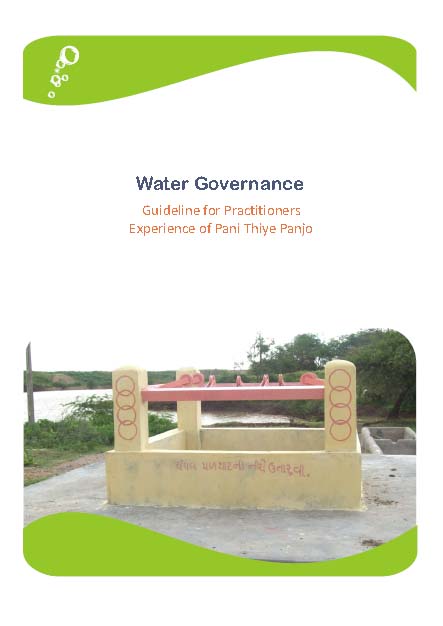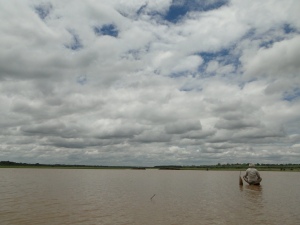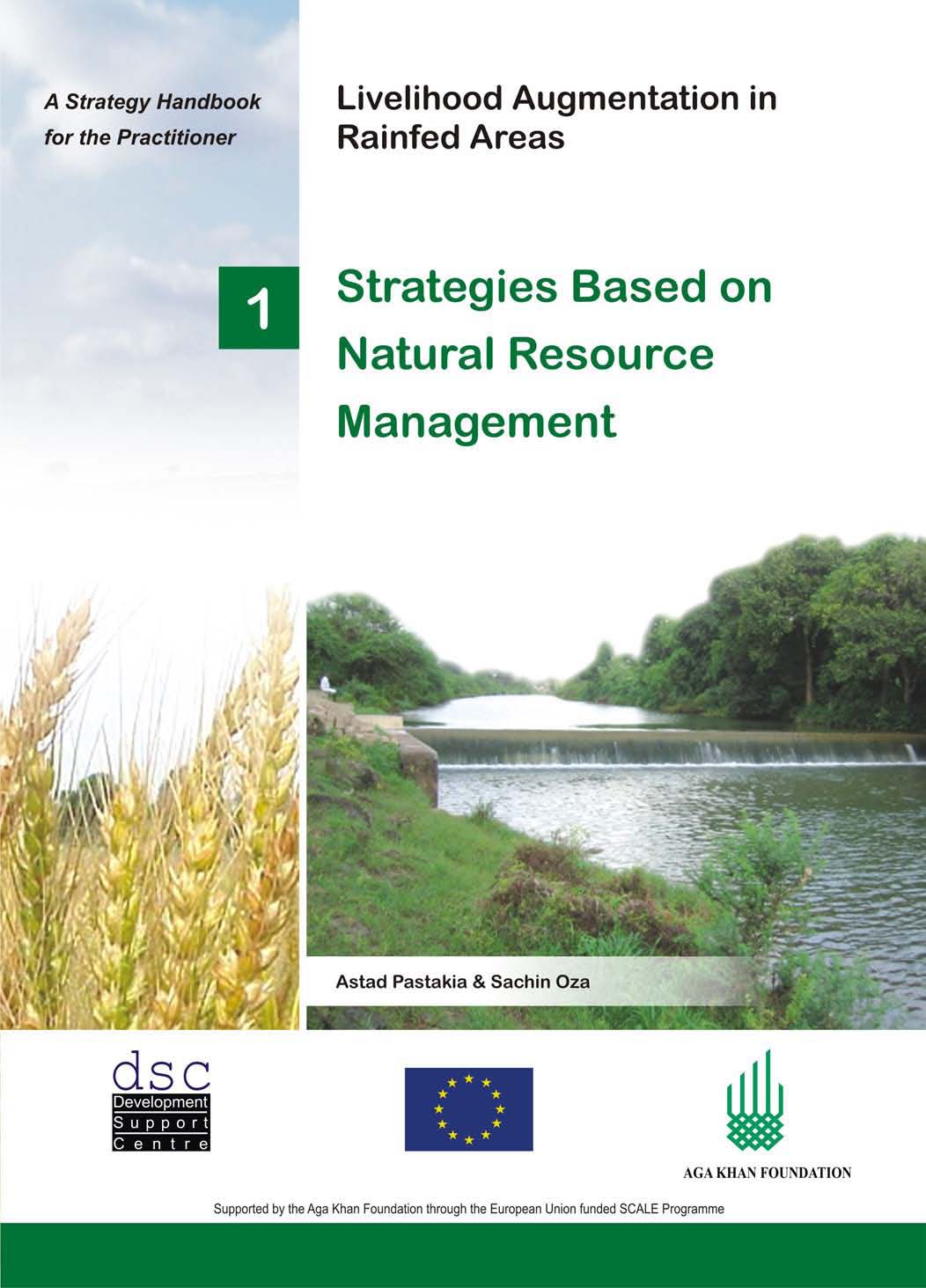/regions/political
Political
Water governance guidelines for practitioners - Sahjeevan's experiences in decentralised drinking water management
Posted on 20 Jun, 2011 08:50 PM This report is based on the experience of women’s collectives promoted by Sahjeevan and of several member organizations of Abhiyan on local water governance, in particular on the demonstrated models of decentralized drinking water that they have taken up in several villages.
This report is based on the experience of women’s collectives promoted by Sahjeevan and of several member organizations of Abhiyan on local water governance, in particular on the demonstrated models of decentralized drinking water that they have taken up in several villages.
Water has been the central theme for development in Kutch. In the last two decades, a scaling up process of decentralized drinking water, popularly known as Pani Thiye Panjo, has been initiated in around hundred villages of Abdasa taluka in Kutch district of Gujarat focusing on development of local drinking water sources, their strengthening and building capacities of communities for maintenance and management of the systems to develop drinking water security at the village level.
The concept of Pani Thiye Panjo, has been well accepted as Abdasa model, which besides providing drinking water security, initiated policy dialogues at the local level on issues such as protection of groundwater, pricing mechanism of water (local vis-à-vis external sources), role of Panchayati Raj Institutions in water governance, role of local youth in developing their technical capacities and development of social capital in management of drinking water systems.
Water seminar on 'Partnerships for sustainable water management': 4th edition of the Gujarat Water Summit, organised by Confederation of Indian Industry on July 16, 2011 in Ahmedabad
Posted on 20 Jun, 2011 05:16 PM
Organizer: Confederation of Indian Industry (CII)
Venue: Hotel Grand Bhagawati, Ahmedabad
Background
Water is fast emerging as the key resource of the future. The demand for fresh water is growing at a tremendous pace, aided by a growing population and increased levels of industrialization. Discharge of untreated industrial and domestic waste water to existing fresh water bodies is another cause of concern, as it diminishes the availability of fresh water resources. Both the State and Central Governments have taken cognizance of this need to augment water availability, which is reflected in the growing investments in the water and sanitation sector.
Where our rivers begin - Water literacy for urban India
Posted on 20 Jun, 2011 12:37 PM
 Fisherman on Hessarghatta Lake on the Arkavathy River
Fisherman on Hessarghatta Lake on the Arkavathy River
It is here in a small pond that the Arkavathy river is famously said to originate. It moves down the hill in the form of a spring and enters the first of the man-made reservoirs, called ‘tanks’, the Chikkarayyappanhalli Kere. From thence begins the journey of this tributary to the Cauvery. Passing through a series of tanks built to hold its water for irrigation it comes to the large ‘Nagarakere’ at Dodballapur. The entire drinking water for the town of population 100,000 used to come from this large tank. Moving further on the river comes to the almost 7 sq.km. Large Hessarghatta tank. In 1894 this tank was enlarged and became the first external source of water supply to the city of Bangalore.
Commons, resources, rights and livelihood' - National consultation on traditional communities, livelihood rights & need for strategic alliances, Programme for Social Action, June 24 – 26, 2011, Banjar, Himachal Pradesh
Posted on 20 Jun, 2011 12:30 PMOrganizer: Programme for Social Action
Venue: Community centre, National Park, Banjar, Sai Ropa, Kulu Dt., Himachal Pradesh
Description:
The event aims to bring together grassroots movements and enable the evolution of a collective process to address the impending crisis. Additionally, it also attempts to address issues of building solidarity within diverse movements. This consultation will also specifically look at national legislations such as PESA, FRA, NREGA in order to strengthen their implementation on the ground in order to empower communities, especially women and adivasis.
Long range forecasting of the South West Monsoon for 2011 - A report from India Meteorological Department
Posted on 19 Jun, 2011 10:04 PMIn India, SW monsoon is the principal rainy season and it receives about 80 per cent of its total annual rainfall during the summer monsoon season, from June to September.
From dreams to reality - Compendium of best practices in rural sanitation in India - A document by the Water and Sanitation Programme and the Ministry of Rural Development
Posted on 19 Jun, 2011 05:50 PMThis compendium by the Water and Sanitation Programme and the Ministry of Rural Development, Government of India presents case studies about the achievements and experiences of different situations, institutional models, community mobilisation approaches, supply chain management techniques, capacity building methods, convergence of various programmes, school sanitation, innovative approaches etc from different states and regions in the country.
After a decade of launching the Total Sanitation Campaign, India has seen significant successes in terms of the sanitation coverage, creating open defecation communities/GPs and solid and liquid waste management. Thousands of success stories have emerged across the country while still there are many challenges in making the entire rural India Nirmal and sustaining the changes achieved.
Training announcement on ‘Water supply distribution modelling’, July 9, 2011, Pune
Posted on 19 Jun, 2011 04:01 PM Organizer: The Community Engineer
Organizer: The Community Engineer
Venue: Pune
Description:
Training will include presentations, work out problems, step to step guide to modelling and hands on experience in using the software.
Training focus on students/graduates, consultant, contractor, municipal/department engineers.
“Schedule irrigation, Save water" campaign, The Sugarcane Breeding Institute, July 27 - 29, 2011, Dharmapuri, Tamilnadu
Posted on 19 Jun, 2011 03:54 PM Organizer: The Sugarcane Breeding Institute
Organizer: The Sugarcane Breeding Institute
Venue: Dharmapuri district Co-op Sugar Mills, Palacode, Dharmapuri
Description:
The Sugarcane Breeding Institute (of the Indian Council of Agricultural Research), Coimbatore is organizing a "Schedule irrigation, Save water" campaign in Dharmapuri district. The event is being organized under 'Farmers' Participatory Action Research Programme (FPARP)'.
Letter of invitation for the membership of Water and Environmental Sanitation Network India
Posted on 19 Jun, 2011 03:52 PMI would like to invite you to visit www.wesnetindia.org where we have provided the latest information about water and sanitation related vacancies, events, training courses, press releases etc.
The Water and Environmental Sanitation Network of India or WES-Net India is a learning alliance of stakeholders in the Water and Environmental Sanitation sector in India, was set up in 2004 by a group of like-minded sector professionals and registered in 2009 as a society under the Indian Societies Act, with a Governing Body, a General Body and a National Coordinator.
Livelihood augmentation in rainfed areas – A strategy handbook for practitioners by Development Support Centre
Posted on 19 Jun, 2011 10:33 AM It is a compilation of ongoing, successful strategies piloted and upscaled by a range of development agencies in different parts of the country. The handbook is presented in four volumes under a common framework and focus on initiatives related to: participatory natural resource management; rural entrepreneurship development; use of information communication technology and institution development.
It is a compilation of ongoing, successful strategies piloted and upscaled by a range of development agencies in different parts of the country. The handbook is presented in four volumes under a common framework and focus on initiatives related to: participatory natural resource management; rural entrepreneurship development; use of information communication technology and institution development.
About 400 million rural poor reside in about 200 poorest districts of the country that constitute rainfed areas. Scientific research has revealed a vast untapped potential in rainfed agriculture where crop yields are lower than their potential by two to five fold. A large number of innovative projects and ideas have been tried to address this issue, although documentation has been uneven and fragmented. Drawing upon such experiences, the handbook points towards new vistas and untapped opportunities in meeting the challenge of enhancing food security with limited water resources and improving the carrying capacities of rainfed areas to match the rapidly increasing populations in these regions and elsewhere.